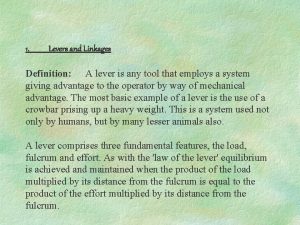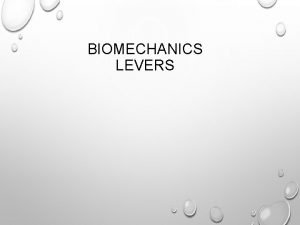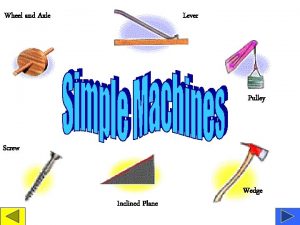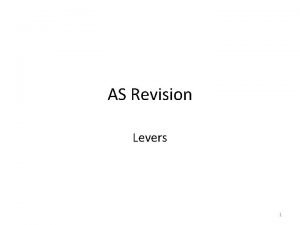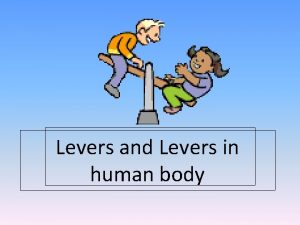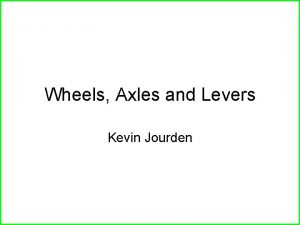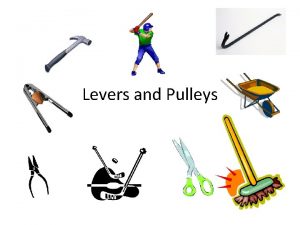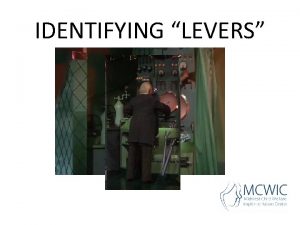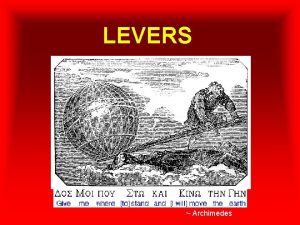1 Levers and Linkages Definition A lever is







- Slides: 7

1. Levers and Linkages Definition: A lever is any tool that employs a system giving advantage to the operator by way of mechanical advantage. The most basic example of a lever is the use of a crowbar prising up a heavy weight. This is a system used not only by humans, but by many lesser animals also. A lever comprises three fundamental features, the load, fulcrum and effort. As with the 'law of the lever' equilibrium is achieved and maintained when the product of the load multiplied by its distance from the fulcrum is equal to the product of the effort multiplied by its distance from the fulcrum.


Mechanical Advantage: In fig. 1 the effort required to keep the lever in equilibrium is less than the load as it is a further distance from the fulcrum. The greater the difference between the force of the effort and the force of the load means the greater the mechanical advantage. More simply the Mechanical Advantage (MA) can be calculated as follows; MA = load / effort.

Velocity Ratio: There is no such thing as a free lunch. So the saying goes. This is certainly true of the use of levers. Although the effort to stabilise the load` is less than the load, to move the load the effort will also have to move, the ratio of distance moved by the effort to the load is in reverse proportion to the magnitude of the effort to the load

radius RADIUS Distance moved by load Example 1. Fig. 2 A load of 50 N can be moved by an effort of 10 N. Calculate the MA. MA = Load = 50 =5 Effort 10 Velocity Ratio: = distance moved by effort Distance moved by load

is Example load 2. The when the effort moves through 760 mm. Calculate the velocity ratio. V. R. = 760 =8 95 Note: The V. R. of a lever can also be calculated by: V. R. = RADIUS Radius The efficiency of the machine is measured by: Efficiency = MA X 100% V. R. Thus combining example 1 and 2 Efficiency = (5 X 100)/8 = 62. 5%

No machine can be 100% efficient. From the examples above: Work done by the effort = force x distance moved = 10 N x 0. 76 m = 7. 6 joules Work done by the load = force x distance moved = 50 N x 0. 095 M = 4. 75 joules work done by load X 100% Efficiency = Work done by effort 4. 75 X 100% = 7. 6 = 62. 5% or: energy out of the machine energy put into the machine

